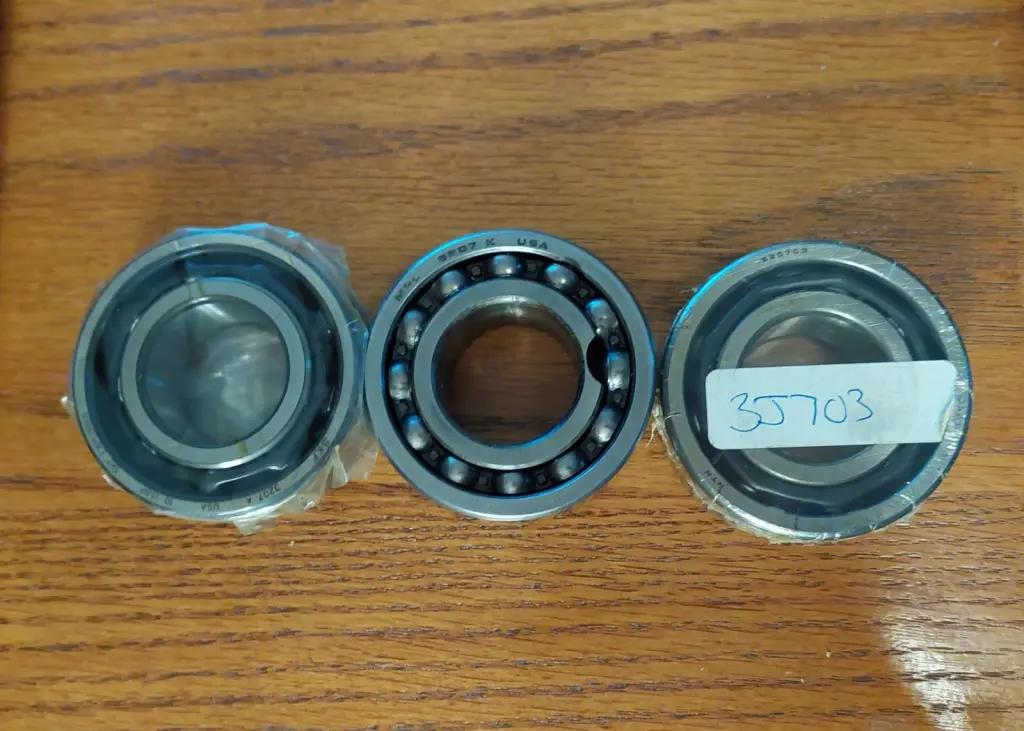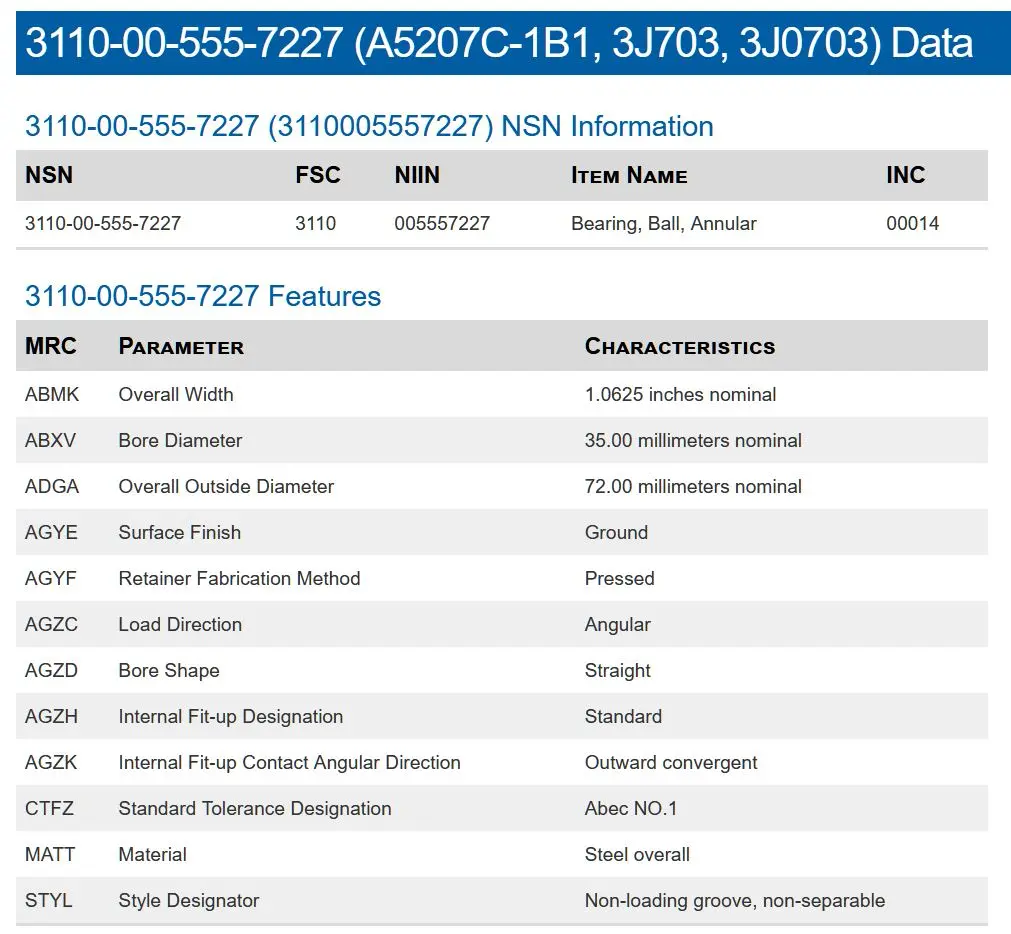
the manufactures website will usually give a break down of what each digit means in the part number, there are many options and grades for a given size bearing.
I've found NTN bearings manufactured in Japan to be high quality
Cats Forever
We farmers are famous for turning over a used bearing in our hands and if there s no gritty or rough spots we think it is good to go. Unfortunately that was not the right way to check a bearing particularly an angular ball bearing. If the runout and end play measured within the limits of the new bearing, then the old bearing is OK. Often the end play or radial runout becomes greater with use and that requires a replacement. As to the issue of 12 verses 10 balls, the bearing designs have so many critical criteria that either one should work. With a pump environment with good oil, the old bearing is probably OK.
"i reject your reality and substitute my own" - adam savage. i suspect my final words maybe "well shit, that didnt work"
instead of perfection some times we just have to accept practicality
those new bearings will work just fine. as the code number is the same. and the difference between a sealed or non sealed bearing is some one took a screwdriver to it and popped the seals. number of balls is a non issue and doesnt affect the load carrying ins this situation.
if you went to a bearing joint and bought them they will be correct. simply google for a cross reference for the bearing code to confirm
"i reject your reality and substitute my own" - adam savage. i suspect my final words maybe "well shit, that didnt work"
instead of perfection some times we just have to accept practicality
that is the correct bearings. and that is a angular contact bearing so semi thrust bearing instead of a plain bearing. which makes sense in a pump to have some side loading.
if rebuilding something its best to replace than reuse bearings as all the work to remove and pull it down has to be repeated and also more cost as it may involved changing other parts that are now shagged due to a bad bearing. do it right do it once.

Here are the original specs for the 3J0703 = Bower/BCA = Timken 5207W
The "W" means w/o annular groove and lube hole in outer ring.
[attachment=67731]Original 3J0703 bearing specs.JPG[/attachment]

The center bearing in the picture is an old style heavy duty deep groove ball bearing note the groove on the right side of the inner race. That is a filling slot needed for the extra balls. No one makes these any more as other bearing like paired tapered roller bearing are now readily available for heavy duty applications. Bearing have improved a lot over the years so the stand bearing will have a load rating very close to what the old HD bearings had and will work fine. You may be able to find an old stock nos bearing on E-Bay if you really want to be original.
The center bearing in the picture is an old style heavy duty deep groove ball bearing note the groove on the right side of the inner race. That is a filling slot needed for the extra balls. No one makes these any more as other bearing like paired tapered roller bearing are now readily available for heavy duty applications. Bearings have improved a lot over the years so the stand bearing will have a load rating very close to what the old HD bearings had and will work fine. You may be able to find an old stock bearing on E-Bay if you really want to be original.
"i reject your reality and substitute my own" - adam savage. i suspect my final words maybe "well shit, that didnt work"
instead of perfection some times we just have to accept practicality
bearings like seals are pretty well standardised now. and the code numbers are this is down to the society of automotive engineers and the car industry. is what has allowed mass production and other things like the allies winning ww2.